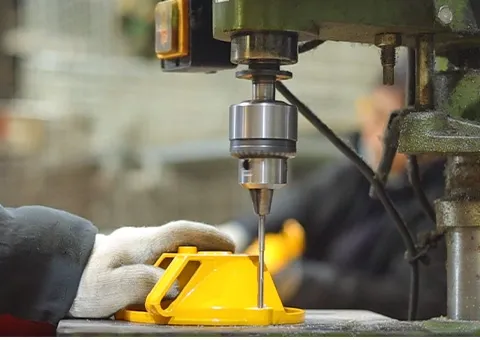heavy duty gantry crane
Heavy Duty Gantry Crane Revolutionizing Industrial Lifting Operations
Heavy duty gantry cranes have become an indispensable piece of machinery in various industrial sectors, distinguished by their robust design and remarkable lifting capacity. These cranes are primarily used in settings where large and heavy loads need to be moved with precision and efficiency, such as shipyards, construction sites, manufacturing plants, and logistics hubs.
The structural design of a heavy duty gantry crane typically features a steel framework that supports a hoisting mechanism capable of lifting weights ranging from several tons to over a hundred tons. The gantry system consists of two vertical legs connected by a horizontal beam, which allows the crane to move along a track. This configuration not only provides stability but also maximizes the usable area under the crane, making it ideal for loading and unloading materials in confined spaces.
One of the key advantages of heavy duty gantry cranes is their versatility. They can be equipped with various types of hoisting equipment, including electric chain hoists, wire rope hoists, and even specialized attachments like magnets or clamps for specific materials. This adaptability allows them to handle a wide range of items, from heavy machinery components to large containers, making them a vital asset across multiple industries.
In addition to their adaptability, heavy duty gantry cranes contribute to increased productivity. Their ability to lift and maneuver massive loads with minimal manual intervention reduces the risk of workplace injuries and speeds up the workflow. By automating the lifting process, businesses can streamline operations and focus on other critical aspects of production or logistics. Moreover, the efficiency of these cranes means that fewer operators are needed on-site, which translates to cost savings.
heavy duty gantry crane

Safety is paramount in any industrial environment, and heavy duty gantry cranes are designed with various safety features. These include overload protection systems, emergency stop buttons, and limit switches to prevent unintended movements. Regular maintenance schedules and inspections further enhance safety, ensuring that the crane operates within its designated parameters and minimizes risks of accidents.
Innovation in crane technology has also led to the development of advanced features such as remote control operations and smart technology integrations. Some modern heavy duty gantry cranes are fitted with sensors that provide real-time data on load weight, crane health, and operational status. This data can be monitored remotely, allowing for proactive maintenance and operation monitoring, further improving safety and efficiency.
Despite their many advantages, it is crucial for businesses to select the right gantry crane for their specific needs. Factors such as load capacity, span width, lifting height, and track configuration should be considered when making a purchase. Consulting with crane manufacturers and engineers can help organizations make informed decisions that optimize their lifting operations.
In conclusion, heavy duty gantry cranes are vital equipment that enhances efficiency, safety, and productivity in heavy lifting operations across various industries. With their robust design, versatility, and advanced technological features, these cranes not only facilitate the movement of heavy loads but also help businesses achieve higher operational standards. As industries continue to evolve, the role of heavy duty gantry cranes will undoubtedly remain central to the success of heavy lifting and logistics operations, making them a crucial investment for any company dealing with substantial loads.
-
Unlock Seamless Relocation with Our Heavy Equipment Moving ExpertiseNewsJun.06,2025
-
Unleash Unrivaled Flexibility with Our Adjustable Gantry CraneNewsJun.06,2025
-
Unleash Heavy-Duty Efficiency with Our Industrial Gantry Crane SolutionsNewsJun.06,2025
-
Revolutionize Steel Handling with Our Magnetic Lifter RangeNewsJun.06,2025
-
Master Equipment Mobility with Premium Machinery Mover SolutionsNewsJun.06,2025
-
Elevate Your Material Handling with Magnetic Lifter TechnologyNewsJun.06,2025
-
YS Permanent Lifting Magnets: The Smarter Way to Handle SteelNewsMay.22,2025
